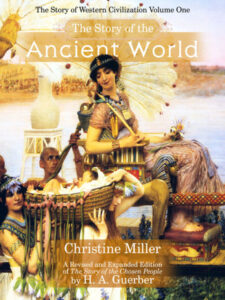 The short answer is, because the Hebrew Scriptures treat Pul and Tiglah-Pileser as if they were two separate kings, even if the commentaries don’t.
The short answer is, because the Hebrew Scriptures treat Pul and Tiglah-Pileser as if they were two separate kings, even if the commentaries don’t.
 Concerning the kings of Assyria, in my New King James Bible, it says,
Concerning the kings of Assyria, in my New King James Bible, it says,
Pul king of Assyria came against the land; and Menahem gave Pul a thousand talents of silver, that his hand might be with him to strengthen the kingdom under his control. 2 Kin 15:19
with a footnote after Pul’s name, which says,
2 Kings 15:19 That is, Tiglath-Pileser III (compare verse 29).
Verse 29 says,
In the days of Pekah king of Israel, Tiglath-Pileser king of Assyria came and took Ijon, Abel Beth Maachah, Janoah, Kedesh, Hazor, Gilead, and Galilee, all the land of Naphtali; and he carried them captive to Assyria. 2 Kin 15:29
Why do the footnotes say that Pul and Tiglath-Pileser are the same king? It is the current understanding of modern secular historians that they were the same king. This bias toward modern secular scholarship is repeated in 1 Chr 5:26, which in the NKJV is translated as:
So the God of Israel stirred up the spirit of Pul king of Assyria, that is, Tiglath-Pileser king of Assyria. He carried the Reubenites, the Gadites, and the half-tribe of Manasseh into captivity. He took them to Halah, Habor, Hara, and the river of Gozan to this day.
But what does the Hebrew Bible say? The Hebrew Bible in English says:
And the God of Israel stirred up the spirit of Pul king of Assyria, and the spirit of Tillegath-pilneser king of Assyria, and he carried them away, even the Reubenites, and the Gadites, and the half-tribe of Manasseh, and brought them unto Halah, and Habor, and Hara, and to the river of Gozan, unto this day. 1 Chr 5:26
The original Hebrew treats the two kings as if they were two separate kings, Tiglath-Pileser merely succeeding Pul on the throne. This turn of events is explained from Assyrian and Babylonian history in The Story of the Ancient World, as follows (the repentance of the kings of Nineveh (Assyria) was due to the preaching of Jonah, for all that generation):
Now Pul, the king of Assyria, came against Israel, and Menahem offered him a trib-ute of one thousand talents of silver, if he would confirm him on the throne of Israel. Pul agreed, and Menahem obtained this great sum—many millions of dollars in today’s money—by heavily taxing the Israelites (771 BC). But Menahem died after a reign of ten years, and was succeeded by his son, who did not rule long, for one of his captains murdered him, and reigned in his stead (759 BC).
While these revolts were occurring in Israel, a great change had taken place in Assyria. Pul, the king of Babylon and Assyria, died; and a new king of Babylon arose, who was not of Pul’s family. He collected the chronicles of the kings of Babylon who had reigned before him, and destroyed them all, so that the history of the kings of Babylon must necessarily start with him (747 BC).
The new king of Babylon was Na-bo-nas´sar, and as usurpers often have difficulty securing their hold on the kingdom, Assyrian affairs were neglected for a time. In the mean while, Asshurnirari, the king of Nineveh—one of those kings who had walked in repentance before the Lord God—also died (745 BC).
Thus it was that a usurper in Assyria saw his opportunity as well. With Pul dead, and Nabonassar occupied, Asshurnirari’s ambitious gardener rose up and seized the throne of Assyria. This monarch’s name was Tig-lath-pil-e´ser, and he did not walk in repentance before the Lord as had his predecessors.
Because of the generation of Ninevites who lived in repentance, Assyria had been reduced back to her old national boundaries; but Tiglath-pileser immediately sought to remedy this state of affairs. He mobilized the army, and prepared them so well that the king of Assyria was soon ready once again to embark on a career of conquest.”
This history is confirmed by George Rawlinson (Camden professor of ancient history at Oxford University, 1861-1889) in The Five Great Monarchies of the Ancient Eastern World, Vol 2., pages 122-124:
One important difficulty presents itself, at this point of the narrative, in an apparent contradiction between the native records of the Assyrians and the casual notices of their history contained in the Second Book of Kings. The Biblical Pul — the “king of Assyria” who came up against the land of Israel … is unnoticed in the native inscriptions [of the Assyrians], and even seems to be excluded from the royal lists by the absence of any name at all resembling his in the proper place in the famous Canon [of Assyrian kings]. … [here he discusses the assertion that Pul and Tiglath-Pileser are the same man, and discards the notion with evidence] … Berosus [the most accurate Babylonian historian from ancient times] represented Pul as a Chaldean king; and the name itself, which is wholly alien to the ordinary Assyrian type, has at least one counterpart among known Babylonian names.”
But we don’t have to take George Rawlinson’s word for it. Several fragments from Berosus have been preserved, as other authors of the ancient world quoted him, whose works have survived. Alexander Polyhistor quotes the section concerning Pul:
After whom, he [Berosus] says, there was a king of the Chaldeans whose name was Phulus, of whom also the historical writings of the Hebrews make mention under the name of Phulus (Pul), who, they say, invaded the country of the Jews.” – Extracted from the Armenian Chronicon of Eusebius, as quoted in Cory’s Ancient Fragments by Richmond Hodges, pp. 85-86 (1876 edition).
Pul, who made Assyria tributary to the Babylonian throne, was indeed the “king of Assyria” as Scripture attests, in this epoch. Vassalage to the Babylonians ended with the rise of Tiglath-Pileser.
Do you have a question about The Story of the Ancient World?
Please ask at info@nothingnewpress.com
[wp_eStore_fancy1 id=3]
[wp_eStore_fancy1 id=4]


I too believe that Pul and Tiglath-Pilesar are two different Assyrian kings.
Beginning of Conflict Between Assyria and Samaria (Israel)
Although many believe that king Ahab of Israel (Samaria) participated in the Battle of Qarqar in about 853 BC, I believe he was already dead by that date. Also, why would he fight on the side of Aram (against whom he fought three battles, dying in the last battle) against Assyria when there is no record of previous conflicts between Samaria and Assyria.
The Kurkh Monolith of Assyrian king Shalmaneser III contains a description of the Battle of Qarqar and contains the name “A-ha-ab-bu Sir-ila-a-a” which is generally accepted to be a reference to Ahab king of Israel. I feel this translation is in error because of the unlikely alliance between Aram (Syria) and Samaria against Assyria.
Aram and Samaria were enemies from the days of Baasha king of Samaria (953-930 BC), 1 Kings Chapter 15, until Pekah king of Samaria (757-731 BC) and Rezin king of Aram made an alliance against Jotham king of Judah (758-742 BC) and later Ahaz king of Judah (742-728 BC), 2 Kings 15:37, 2 Kings Ch. 16, Isaiah Ch. 7 & 8 and 9:11.
Also, I believe that Ahab reigned 918-899 BC and as stated before he was already dead by 853 BC. See my article http://www.historyfiles.co.uk/FeaturesMiddEast/CanaanIsraelites_Qarqar01.htm
By adding the length of reigns of the Judah kings in I & II Kings, I get 393.5 years. That is very close to the 390 years of “iniquity of the house of Israel” in Ezekiel 4:4-6. I Therefore, I believe the reigns of the kings of Judah listed in I & II Kings are accurate with 390 years being a little more accurate than the summing of the reigns. By counting back from 586 BC when many scholars write that the Jerusalem Temple was destroyed by the Babylonians I get the beginning of the reigns of the kings of Judah, then from those reigns I get the reigns of the kings of Israel by the year their reign started in a Judah king’s reign in I & II Kings. See chart at the end of this article.
There is no mention of conflict between Samaria and Assyria in the Bible until Menahem is king of Samaria (770-759 BC).
2 Kings 15:19 New International Version (NIV)
19 Then Pul king of Assyria invaded the land, and Menahem gave him a thousand talents] of silver to gain his support and strengthen his own hold on the kingdom.
It is generally believed that Pul is Tiglath-Pileser III king of Assyria (745-727) but I feel it is Ashur-Dan III king of Assyria (773-755). Although Tiglath-Pileser III was a powerful king, he is said to be a usurper and it is believed he may have claimed some accomplishments of previous kings by destroying their records and rewriting history.
Even in many Bible translations it is indicated that Pul and Tiglath-Pileser are the same person however some seem to indicate that Pul and Tiglath-Pileser were two separate kings.
1 Chronicles 5:26 King James Version (KJV)
26 And the God of Israel stirred up the spirit of Pul king of Assyria, and the spirit of Tilgathpilneser king of Assyria, and he carried them away, even the Reubenites, and the Gadites, and the half tribe of Manasseh, and brought them unto Halah, and Habor, and Hara, and to the river Gozan, unto this day.
1 Chronicles 5:26 Young’s Literal Translation (YLT)
26 and stir up doth the God of Israel the spirit of Pul king of Asshur, and the spirit of Tilgath-Pilneser king of Asshur, and he removeth them — even the Reubenite, and the Gadite, and the half of the tribe of Manasseh — and bringeth them in to Halah, and Habor, and Hara, and the river of Gozan unto this day.
In a translation of Tiglath-Pileser III’s Calah Inscription (see Calah Inscriptions – Bethel University), the name Menahem is added but it is indicated by brackets that it was not legible. The inscription goes on to mention king Pekah and that he (Tiglath-Pileser) replaced Pekah with Hosea.
It is generally accepted that Tiglath-Pileser III was king of Assyria (745-727 BC), about 18 years. According to scripture Pekahiah followed Menahem on the throne for 2 years (2 Kings 15:23) then Pekah reigned for 20 years (2 Kings 15:27) then Hosea therefore it was at least 22 years between Menahem and Hosea, but if Tiglath-Pileser III was king of Assyria for only 18 years the name added in the translation should not be Menahem. King Pekah would fit better with scripture (2 Kings 15:29-30) where Tiglath-Pileser III overwhelmed Pekah and capture much of his kingdom. Tiglath- Pileser III may have sent help for Hoshea to take the throne or he may have just been claiming that he replaced Pekah with Hosea.
In the Biblical book of the profit Amos, the beginning of the book is about God punishing various kingdoms for various reasons but from chapter 3 and on it is all about Samaria (Israel) and the coming judgement and punishment of Samaria which will end with a complete end of the nation and many people, but not of all the people.
Amos 1:1 New International Version (NIV)
1 The words of Amos, one of the shepherds of Tekoa—the vision he saw concerning Israel two years before the earthquake, when Uzziah was king of Judah and Jeroboam son of Jehoash was king of Israel.
I have Uzziah king of Judah from 809 to 758 BC and Jeroboam king of Samaria 823 to 771 BC. The date of the earthquake is unknown, possibly around 770 BC.
Chapter 8 discusses the coming destruction of Samaria and in verse 9 of the chapter it speaks of an apparent eclipse.
Amos 8:9 New International Version (NIV)
9 “In that day,” declares the Sovereign LORD,
“I will make the sun go down at noon
and darken the earth in broad daylight.
I believe this corresponds to the eclipse called Bur-Sagale in 763 BC which also probably corresponds to the time of 2 Kings 15:19 when Pul invaded Samaria and Menahem paid him a tribute of a thousand talents of silver that Menahem exacted from men of wealth in Samaria. This invasion began the conflict between Assyria and Samaria which would continue about 40 years and culminate with the complete destruction of the nation of Samaria by the Assyrians in 722 BC.
Shea, William H – A Note on the Dating of the Battle of Qarqar, Andrews University, 1977
Na’aman, Nadav – Two Notes on the Monolith Inscription of Shalmaneser III from Kurkh, Tel Aviv 3, pp 89-106, 1976
http://www.historyfiles.co.uk/FeaturesMiddEast/CanaanIsraelites_Qarqar01.htm
My Calculations from Bible
Combined Kingdom
Saul 1098-1056
David 1056-1016
Solomon 1016-976
Kings Judah Kings Israel
1. Rehoboam 976-959 1. Jeroboam I 976-954
2. Abijah 959-956 2. Nadab 954-953
3. Asa 956-916 3. Baasha 953-930
4. Elah 930-929
5. Zimri 929-925
6. Omri 925-918
4. Jehoshaphat 916-892 7. Ahab 918-899
5. Jehoram 892-886 8. Ahaziah 899-898
6. Ahaziah 886-885 9. Joram 898-886
7. Athaliah 885-878 10. Jehu 886-855
8. Joash 878-838 11. Jehoahaz 855-841
9. Amaziah 838-809 12. Jehoash (Joash) 841-823
10. Uzziah (Azariah) 809-758 13. Jeroboam II 823-771
11. Jotham 758-742 14. Zechariah 771-770
12. Ahaz 742-728 15. Shallum 770-770
13. Hezekiah 728-699 16. Menahem 770-759
14. Manasseh 699-643 17. Pekahiah 759-757
15. Amon 643-641 18. Pekah 757-731
16. Josiah 641-609 19. Hoshea 731-722
17. Jehoahaz 609-609
18. Jehoiakim 909-597
19. Jehoiachin 597-597
20. Zedekiah 597-586
Total 393.5 almost matches the years of iniquity of the house of Israel in Ezekiel 4:5-6 (390 years) therefore I believe the 390 years is the more accurate number:
therefore, I adjust the reigns slightly to total 390 total years after I calculate the beginning of the reigns backward from 586 BC (destruction of Temple, some say it was 587)
Since I believe the Judah king reigns are close to accurate, I base the beginning year of the Israel kings on the year of reign of the Judah king recorded in I & II Kings.
Josiah was killed in Battle of Megiddo between Egypt (Nicho I) and Judah (Josiah) in about 609 BC.
2 Kings 18:9-10, If Samaria was taken 722 BC then Hezekiah became king in 722+6=728 BC and Hoshea became king in 722+9=731 BC
I feel the Judah King reigns are accurate but there are problems with some reigns of Israel King’s especially around the reign of Jeroboam II.